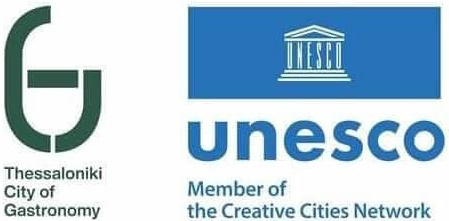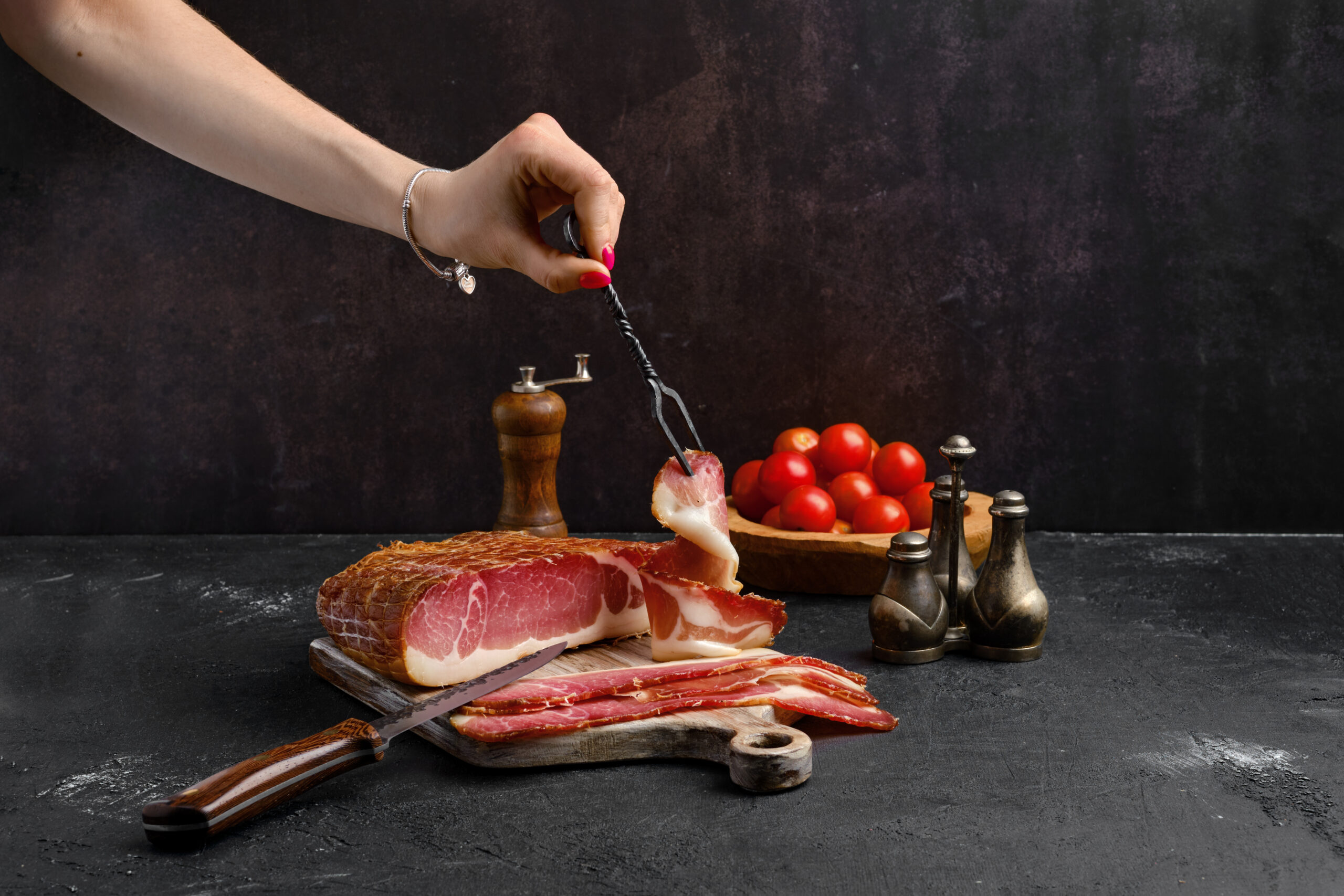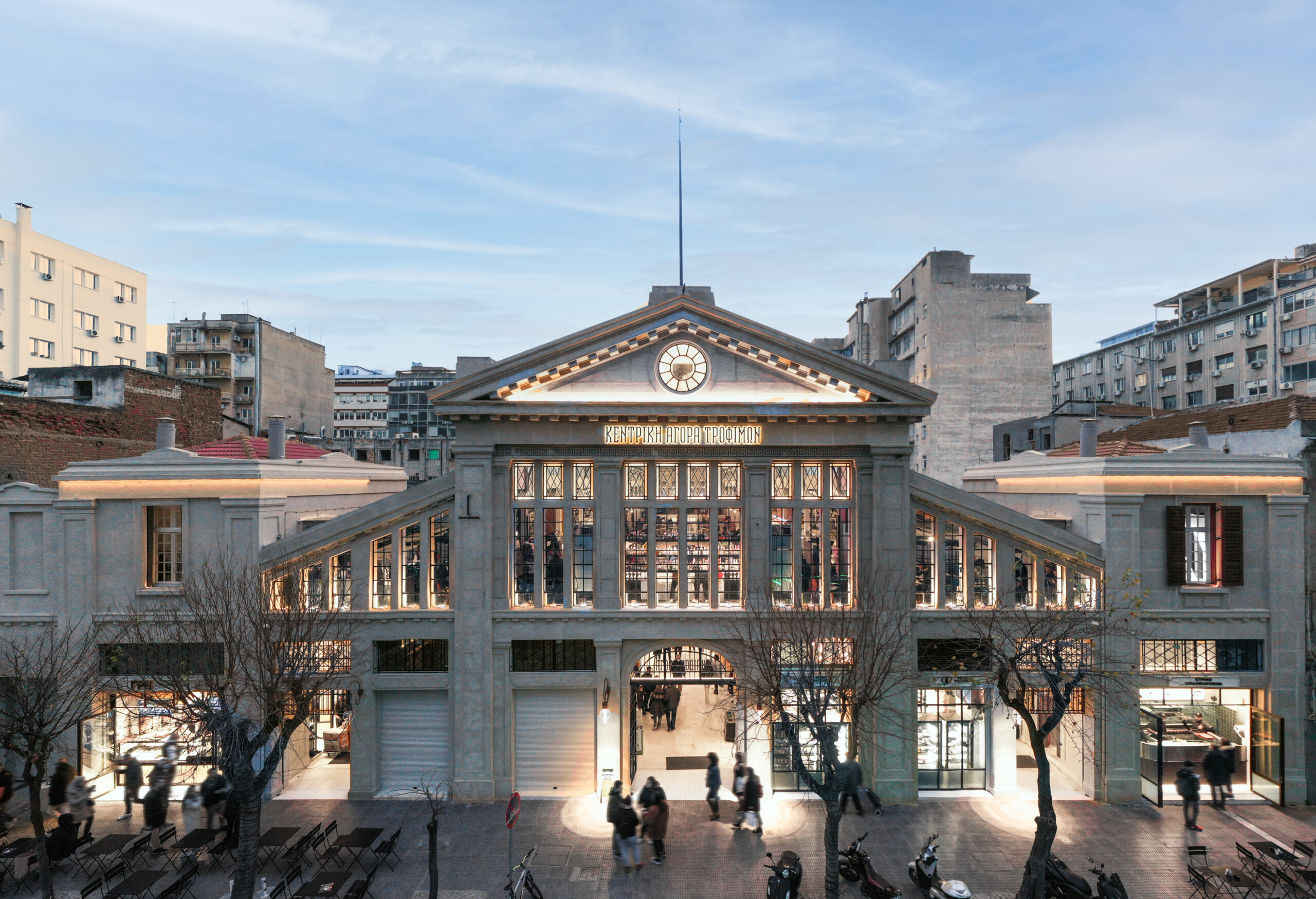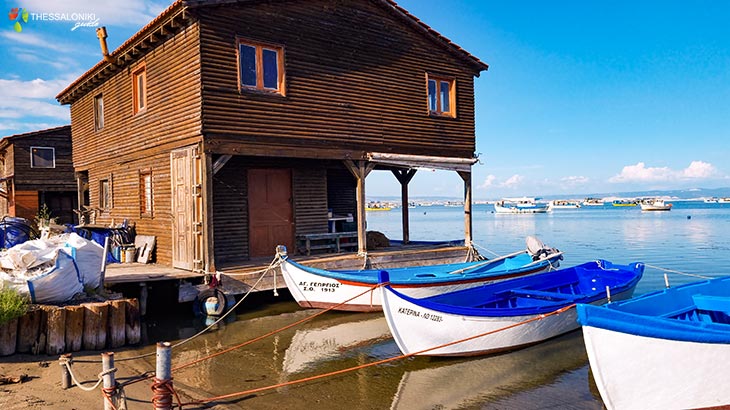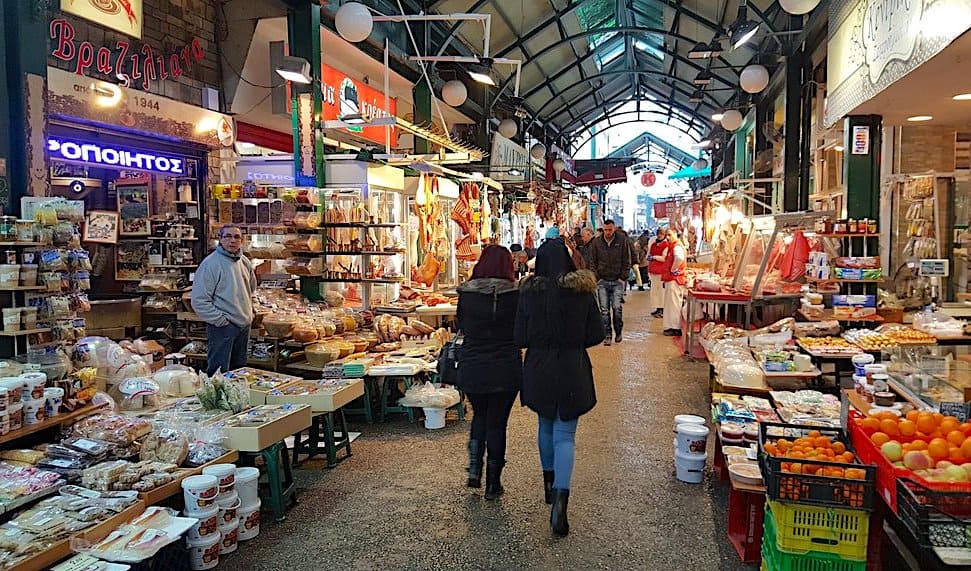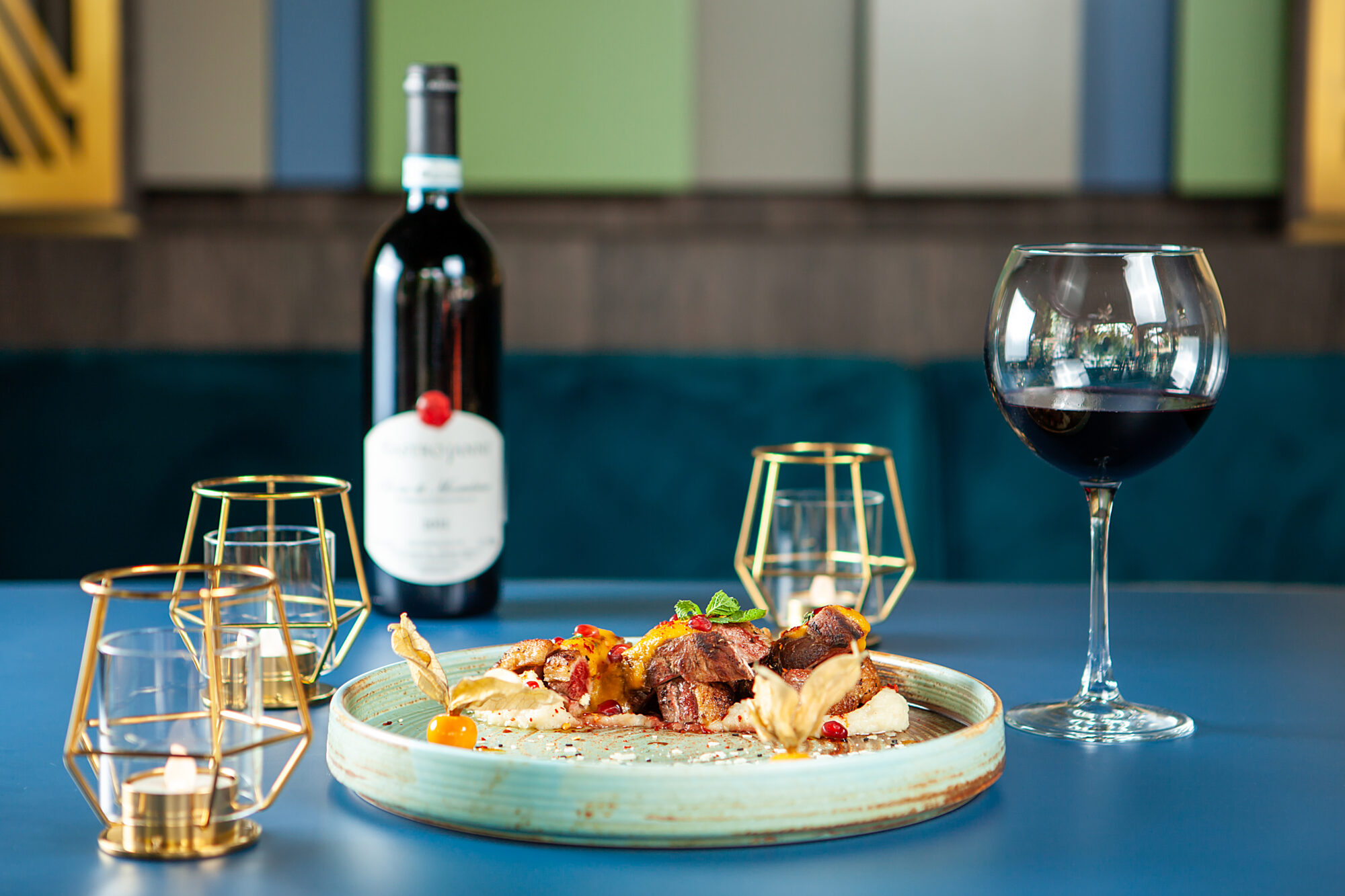
Every corner of this city is a memory, just like the multiple layers of its history, which are brought to light each time a new archaeological excavation is conducted. A cosmopolitan city by its genesis, it has managed to keep elements from all the cultures that have come and gone. From the ancient and Roman, to the Byzantine, Ottoman, and even from communities like the Jewish and the Asia Minor Greeks.
A city, or a “big village”, as many like to call it, because it is both large and small at the same time. It carries a European atmosphere with an Eastern flair, while maintaining a distinctly Greek character.
Four parallel roads along the sea define its center, and there’s no chance of getting lost, as the sea is always there, emerging through the vertical alleys, all leading to the seafront, which is bustling with life. Visitors can enjoy endless strolls amidst shops, boutiques, churches, ancient monuments, modern department stores, museums, always feeling the influence of its history, coupled with the sea humidity and the air of a European city.
Thessaloniki is a cosmopolitan city that is always moving forward in a magical way, while finding ways to honor its past. The city has always had restaurants. Since the early 1950s, in every district, in the center, in the countryside, there are taverns, ouzeri (traditional Greek taverns serving ouzo and small dishes), and mezedopolia (places offering a variety of appetizers), which have their own particular character.
Restaurants such as “Olympos Naoussa”, “Stratis”, “Krikelas”, but also kitchens such as “Kairo” in Tsimiski Street, “Elvetikon” in Agias Sofias Street, “Athinaikon” in Komninon Street, have left their mark on the town’s gastronomy. The soutzoukakia (Greek meatballs) of “Rogotee”, the restaurants “Klimataria”, “Tiffany’s”, “Diagonios”, “Ta Nisia”, “Clochard”; restaurants, each time period has something to showcase.
It is remarkable that such a historical and multicultural city has never left room for ethnic cuisines to develop. Its character is unique and authentic. A quirky, but perfect balance between meze and urban cuisine.
In 2009, Thessaloniki’s cuisine transitions into a new era. New chefs, interested in tradition and utilizing local ingredients from selected producers, from every corner of the country, are establishing a new order of things in the city’s gastronomy. Starting from Nea Folia initially, and then from Sebriko, this new generation of chefs is emerging, and they are successfully developing the culture of the gastrocafé.
This trend continues and progresses further with excellent restaurants scattered all over Thessaloniki. Modern, minimalist decor with a steadfast focus on tradition, featuring old and forgotten recipes, enriched with unique products, many of them PDO and PGI, are described and proudly presented in the menus.
One can encounter another significant category of unique cuisine in all of the restaurants of the city’s major hotels. Renowned and highly talented chefs contribute greatly to this new aspect of the city’s gastronomy, creating dishes and menus that are rooted in tradition, but offer unique and high-quality gastronomic experiences.
Thessaloniki’s pastry shops have their own history and many of them have their own legacy. Among those that have completed their cycle are the emblematic “Cafe Floca”, “Moutafis”, and “Oraia” with its ice creams in Kouskoura Street, the unforgettable “Kefir” for kefir and tulumba with kaimaki in Diagonios Street. Those that are still maintaining their tradition in pastry sweets are “Terkenlis” with its traditional tsoureki (Easter sweet bread) and the delightful aromas that emanate from the shop in Aristotelous Square, “Chatzis” with its kazan dibi, clotted cream, qunafeh, and its assure, “I Dorkada” with its rice pudding in Kassandrou Street, “Hatzifotiou” with its dark chocolate almond rocks (anomala), “Hlios Pastry Shop” with its almond meringue cookies (ergolavos), “Deligiorgakis” with its handmade chocolates and the unique spoon sweet bitter orange (nerantzi) covered in chocolate, “Papadopoulos” with its loukoumia, “Elenidis”, with its unique trigona from Panorama (phyllo triangle pastries with custard), “Nikos” with its wrapped treats in Ippodromiou Street, “Averof Patisserie”, and certainly many more.
Street food also has an extensive history. From the Greek sesame bread rings (koulouri) that ended up being dubbed “Thessaloniki’s”sesame bread rings, and can be found on every street corner, sold by street vendors and in every bakery, both central and neighborly, to gyros, soutzoukakia, as well as souvlaki. Historical shops which don’t exist anymore, the gyros shop “Ksenofon” in Komninon Street, soutzoukakia from “Kosmas” in Pavlou Mela Street, and a variety of bugatsa shops in Egnatia Street. The bugatsa of “Bantis,” a shop with 50 years of history and more, constitutes a singular experience in Panagias Faneromenis Street.
On the subject of Thessaloniki’s street food, worth noting is what became an international marketing case study. A local fast food chain “Goody’s” – today, a multinational enterprise – launched in the city in the 70s and never provided any opportunity for other well – established multinational fast food chains to thrive.
Part of Thessaloniki’s character, as a center of gastronomy, is also the numerous and lush food stores, convenience stores and mini-markets, it has. When entering these, all of your senses activate at once, but unfortunately so does a greedy consumerist tendency. Consequently, no one ever manages to shop according to schedule…
By entering the premises, initially a variety of appealing aromas reach your nostrils that trigger the salivary glands, while the eyes feast on delicious hanging ham legs, “provocative” refrigerators filled with endless heads of graviera cheese, full sacks of rice and pulses. Hands selectively examine products from the packed shelves, lined with jars and boxes containing all kinds of delicacies, from sauces, pickles, olives, to unique delicatessen products.
Your ears steal information from the previous client, because the salesperson gifts a small sample of a treat on the knife, and just like that, the shopping schedule is immediately altered. Many of these shops are located in the center, while others are on the periphery, and carry a long history spanning generations. All, however, are extremely up-to-date with the most authentic, new, innovative, fresh or standardized products available, from every corner of the country.
This city boasts having first place in other categories as well. Urban legend says that here, at one of its most important annual celebrations, the Thessaloniki International Fair, when the city dons its very best and welcomes thousands of visitors, “frappé” coffee was invented in 1957.
The treasures of this city are numerous and the challenge of discovering them is even greater!
Food Service
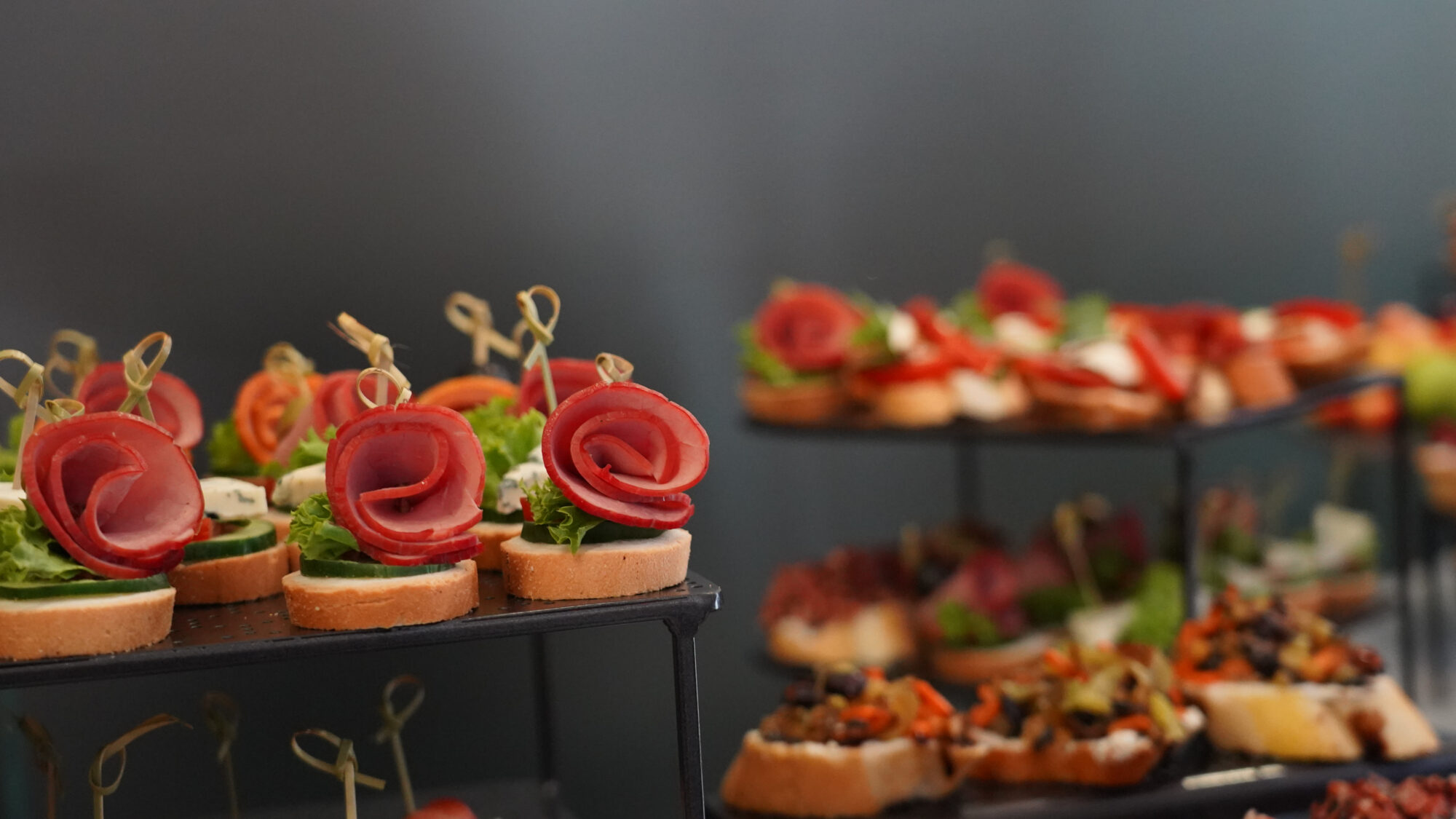
Gastronomy is amongst the primary reasons to visit Thessaloniki, which, for the past decade, is well and truly on the map as one of the most prominent gastronomic destinations of the country. Visitors come, in order to get to know a multicultural city, rich in history, but with its own distinctive, authentic character and most importantly, an exceptionally rich cuisine. Afterall, the inclusion in UNESCO’s Creative Cities Network, a successful initiative of the Municipality of Thessaloniki’s administration, is not by chance.
Its center is rather small and concentrated, lively, filled with colors, experiences, and bustling with people. It is also easily traversed. Places to eat can be found in every corner, every alley, both downtown and in the east, west, the suburbs as well as other regions. Dining out is a must for locals and visitors alike. Online listings are countless, as are the secret spots. These along with word-of-mouth advertising are the main and most credible ways of finding out information about gastronomic havens.
Thessaloniki’s food service ranges from kitchens, ouzeri, mezedopolia, taverns, gastro cafés (a local discovery), and gastrotaverns, to urban and fine-dining restaurants.
In the kitchens, one can eat in simple dine-in spaces with homey atmosphere, without particular ceremony, enjoying every day, homecooked food, such as legumes, vegetables cooked in an olive oil-based sauce, stews or choose a take away option. Rich traditional cuisine, always season–adapted, carrying dishes suited either for summer or winter.
Ouzeri and taverns are a vast world to be explored with lots of particularities, culinary options and delicacies, which are usually exclusive to the establishment. Emblematic shops are scattered around the historical center, the market, the Upper Town and the seafront, where in a few square meters, with small squares, or round coffee tables, they are ready to accommodate small groups or turn the whole shop into one big family.
Mussels are one of the staple appetizers in the city, along with octopus, cuttlefish or stuffed squid, as well as endless savory dishes. Marinated anchovies, lakerda (salt cured bonito) or smoked mackerel, appetizers with legume and pickled vegetables. Similar options and variations are offered for dishes with meat, with soutzoukakia being one of the city’s most emblematic ones.
Taverns are usually typical in appearance, with plaid or white tablecloth, typical decorative features and many options for a complete meat feast, accompanied by cheeses, hot peppers, dips, and other salads and appetizers.
Gastro cafés are the contemporary, renewed and innovative version of the gastronomy of the city, since this new generation of chefs creates with imagination, while still relying on tradition, reviving forgotten recipes, and mainly utilizing local, handpicked ingredients, often in inspired and particularly original combinations.The audience ranges from students to foreigners, and “foodies” with up-to-date knowledge, seeking all these unique experiences the city offers.
Similarly, gastro taverns do not offer appetizers but dishes to taste collectively. Here, the memory of tradition and familiarity returns in a more contemporary and modern version of the Greek tavern. There is a new ethic to this, including passion, knowledge of the raw materials and the producer, who is a partner and a friend.
Urban restaurants with their classic decor and the attention of experienced chefs and waiters are an ode to the city’s urban cuisine, while respecting deeply both its roots and the customer.
The city features leading restaurants and taverns for fish and seafood. Some of them have had a remarkable trajectory and have been associated with the city’s history and the visits of high-profile individuals.Today, they remain a separate category, one that shapes the contemporary gastronomy of the city.
Gourmet spots and fine-dining restaurants, many of which, can be found in the city’s hotels, constitute Thessaloniki’s version of haute cuisine. A group of renowned and internationally acclaimed chefs have managed to create another, truly solid tradition for the city. With a focus towards locality and seeking new and innovative products, they create unique recipes, many of them traditional, but adding a different finesse, with special techniques, textures, appearance and class.
In all the city’s dining spots, it is possible to combine good food with excellent wines from local producers and varieties. Some interesting options are available for retsina, which has been transformed into a wine of distinction, as well as for unique spirits, both to start the meal and whet the appetite, or at the end of the meal, for digestion. Local beers have been added to the lists deservedly, sourced from noteworthy efforts of local microbreweries.
The only certainty is that in Thessaloniki, wherever one may choose to dine, they will be welcomed very warmly, they will be pleasantly surprised and they will depart with an aftertaste of satisfaction, because they are “condemned” to eating heartily!
STREET FOOD

A city with such an evolved gastronomy, that is easily navigated on foot, can only offer a various and intriguing selection of street food options, or options for food on the go. Sometimes traditional with every kind of pie, bugatsa, gyros, soutzoukakia, souvlakia, ribs, and other times trendy, with foreign delicacies from different world cuisines like pizza, burger, bao buns, falafel, Italian pasta. In this city, one can discover plenty culinary treasures, 24/7! Besides, how could it be any other way for the city, which has the largest number of students in the country, estimated at a minimum of 120,000!
Canteens constitute another street food category with its own history and culture. Some of the them, located in fixed spots, offer their own special dishes, while others have developed into retail stores, retaining the character of a canteen. They are a reference point and meeting place for both employees and late night sleepers.
Bakeries, are also considered as another kind of street food spots, in their evolved version, seeing as they carry a large variety of products and snacks easy to eat on the go. Apart from sesame bread rings and pies, one can find creations, both savory and sweet, made with dough and imagination, that combine tradition with “trends”, either more suited to a classic diet or a specialized one.
Gyros inside pita or bread constitutes the city’s signature street food,sparking a humorous yet enduring “difference in opinions” with Athens, where the locals refer to it as “souvlaki”. Especially in areas in close proximity to the local teams’ stadiums, the selection of dishes is infinite, very ingenious and particularly flavorful. Pork, chicken, kebabs, accompanied by all kinds of side dishes such as potatoes, salad dressings, mustard, ketchup. Among the city’s novelties, the unique “black” mustard is included, which is for certain fans of a specific team. For them, the color yellow is forbidden. Soutzoukakia belong in the very same category. Delicious flavors that are enjoyed while standing, served as individual portions on paper sheets, or in a sandwich with bread or pita.
Both Ladadika and Ano Ladadika are lively neighborhoods, filled with young people, and street food spots, some of which are traditional and long standing, while others are newer and trendier, presenting an interesting selection of items.
In the renewed Modiano Market, many shops are located on the ground floor, offering exceptional and inspired street food suggestions. Ranging from canapés with tuna or sardines as accompaniment for tsipouro (tsipouromezedes), to ceviche, german sausages, dumplings, pasta, e.t.c.
Pastries in the context of street food are an entirely different category on their own. Profiteroles to go, ice cream, donuts, trigona (phyllo triangle pastries with custard), loukoumades (Greek donuts with honey) and much, much, more.
Street food is perhaps the most beloved food category in the city, providing space for ethnic and foreign dishes.
It’s definitely not junk food, but delicious and quality food, made with care and lots of imagination!
